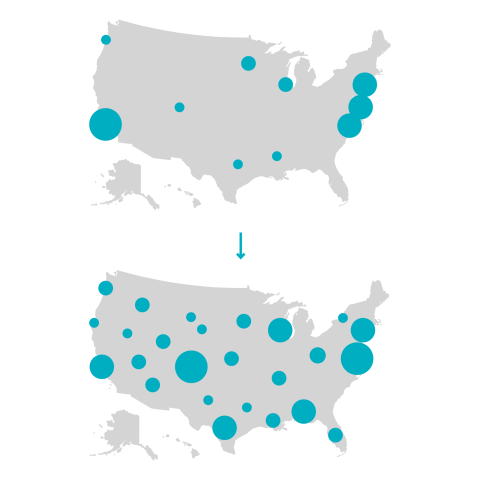Case Study — Ashoka: Innovators for the Public
Ashoka: Innovators for the Public invests in changemakers who are transforming systems nationally and internationally. Boasting two Nobel Peace Prize winners, this is the oldest and largest network of social entrepreneurs (also referred to as Ashoka Fellows), and includes leaders at the frontlines of climate solutions across 30 countries.
I pitched a full organization-wide transformation that resulted in the launch of "All America," a brand new $1MM per year investment portfolio and corresponding strategy that would set a precedent for the fields of philanthropy and social entrepreneurship writ large.
Problem:
I noticed how the demographics of Ashoka’s USA Fellowship did not reflect the fullest extent of changemaking happening in the country. We know that there were incredible women and BIPOC changemakers transforming systems across the USA. Why were these leaders being obfuscated from this network and from the field of social entrepreneurship more broadly?
Could I re-build a process for Fellow selection that actually aligned with Ashoka’s mission to create a world where everyone is a changemaker?
I brought this problem (and the huge opportunity it presented) to the attention of the Director of Ashoka USA, who invited me to join a 3-person team that would lead the re-launch our USA strategy (for the first time since the office opened in 2000). To be successful, we would need to convince and also enable all levels of leadership — from the Board of Directors to Strategic Partners — that this change was not only needed, but that it would require everyone to move differently.
Approach:
Numbers tell a story! Through rigorous data analysis, we quantitatively enumerated a problem that was obvious to me through casual observation: Ashoka’s US Fellows underrepresented the actual demographics of the US – by alot (see graph below!)
I engaged in qualitative interviews with past Fellows to understand their user experience moving through Ashoka’s year-long, seven-step, international panel process.
We mapped out the user journey, and identified the pain points where we could transform a process that had been institutionalized over 30 years, building out a revamped service blueprint for Ashoka’s signature Venture process.
I co-created the future-state vision with a range of stakeholders, dreaming into the world we wanted to see and being exacting about how this directly related to our biggest North Star Vision.
We moved through a full change management process from junior staff to Board of Directors, supporting everyone to feel like innovators integral to the success of our re-launch.
We piloted a new process immediately, iterating as we moved along, knowing that change needed to happen yesterday.
Insights:
Mapping user journey helped us identify clear calls to action. For example, by broadening the scope of our nominators, we could broaden our pipeline of candidates.
All panelists involved needed to be open to new ways of understanding what terms like “entrepreneurialism” and “social impact” mean in the context of different communities.
Implicit bias affect the parts of the process where panelists are asked to make “gut check” calls and decisions.
Impact:
Here is a snapshot of how the make-up of the US Fellowship has changed since re-launching US strategy:
Other philanthropies and social entrepreneurship networks would follow suit, many not until five years after our internal transformation.


